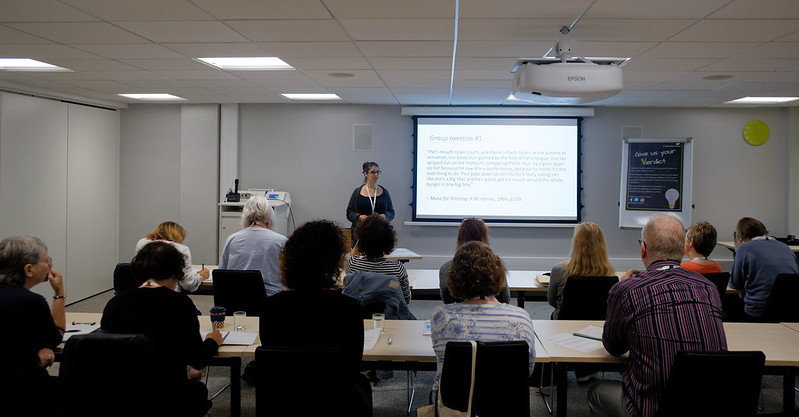This year’s CIEP conference was held online, from 2 to 4 November. Attendees from all over the world logged on to learn and socialise with their fellow editors and proofreaders, and a number of delegates kindly volunteered to write up the sessions for us. Michelle Ward reviewed Excel tips for editors, presented by Maya Berger.
The Editor’s Affairs (TEA) is an Excel spreadsheet package which helps you ‘take the guesswork out of quoting and run your business with confidence’ – two problems I identified with as a relatively new businesswoman and an early stages proofreader.
Before hearing Maya speak about TEA during a Cloud Club West Zoom in September, I was writing my CPD and proofreading jobs down on paper, working out rates for words/hour and words/pence using mathematical formulas learned many years ago in school. I would then transfer this data to a home-made spreadsheet, which never seemed to carry over correctly to the next month or year. I was duplicating work, making mistakes in calculations, and getting frustrated.
Getting to grips with Excel
Maya started her session at this year’s CIEP conference with a quick canter through the many intricacies of Excel – valuable both to beginners and to advanced users. Among other things, she showed us how to:
- wrap text in columns
- hide unwanted columns and rows
- input negative numbers
Her troubleshooting tips explained quick solutions to cryptic errors that I normally research on Google, such as:
- #DIV/0!
- #REF!
- #VALUE!
- Green triangles
A nice cup of TEA
Maya showed us her demo TEA spreadsheet, which has separate pages for:
- CPD
- project timesheet
- income
- expenses
She led us patiently through the steps needed to input our own data, which would then magically populate the columns and rows using pre-loaded formulas. We could then confidently quote for new business, knowing we would have enough time to complete the work before deadline, and would be paid an honest wage for time taken. When the time comes to apply for a CPD certificate or a membership upgrade, we can simply look at the CPD page and know instantly whether we have enough hours and enough points. The Income/Expenses pages would be useful at financial year end. What more could a freelance copyeditor or proofreader need to make their life easier?
Seeing your data clearly
Maya demonstrated using colourful charts to visually enhance selected data, such as an Amount Invoiced/Received Per Month table and a Percentage of Work Per Client pie chart.
- Monthly Summaries table
- Client Summaries table
- Expense Category Summaries table
From these tables, you can tell the percentage of your total income per client, who your best paying client is, how many projects you have for each client, etc. Could your business survive if you lost a particular client?
As with all the sessions at the CIEP conference 2020, I came away invigorated and motivated. Maya finished her session with this fantastic phrase, which I will now use as my business mantra: ‘Check in with yourself and your dreams!’
Special offer
Maya is offering CIEP conference 2020 participants the opportunity to purchase her basic TEA package for £85 until the end of December: more details are available in the ‘Additional Resources’ email sent to delegates after the conference.
 Michelle Ward is a CIEP-trained proofreader and the founder of Brook Language Services. Formerly a Modern Foreign Languages/Special Needs teacher and RAF Reservist, she is now an Intermediate Member of the CIEP specialising in proofreading history (Napoleonic/WWII/memoirs/biographies) and polishing texts written by multilingual authors. She loves curling up by the wood burner with a good book and red wine after a countryside dog walk.
Michelle Ward is a CIEP-trained proofreader and the founder of Brook Language Services. Formerly a Modern Foreign Languages/Special Needs teacher and RAF Reservist, she is now an Intermediate Member of the CIEP specialising in proofreading history (Napoleonic/WWII/memoirs/biographies) and polishing texts written by multilingual authors. She loves curling up by the wood burner with a good book and red wine after a countryside dog walk.
Posted by Abi Saffrey, CIEP blog coordinator.
The views expressed here do not necessarily reflect those of the CIEP.

